Catalonia: State of emergency declared as region faces worst ever drought
- Published
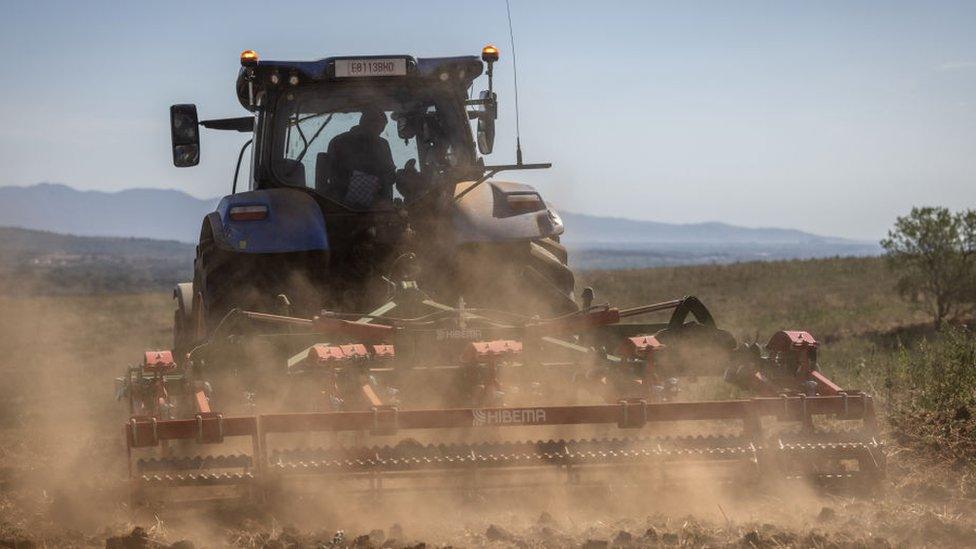
Farmers have been hit hard by the drought
The Spanish region of Catalonia has declared a state of emergency as it faces its worst drought on record.
From Thursday residents will be banned from washing their cars and filling up empty swimming pools under a measure brought in to tackle the crisis.
More than six million Catalans will be affected across 200 towns and cities, including the capital Barcelona.
The restrictions were announced after reservoirs fell to close to 16% of their capacity.
"It's still not raining," Anna Casòliva Freixe told the BBC, looking out of the window of her bakery. "It's worrying if you don't have enough water."
Anna lives and works in Berga, a town high up in the mountains north of Barcelona which has been hit hard by the drought.
"We need water to make bread - we need water to make the dough," she said. "But we need it at home as well: for the washing machine, to shower and so on."
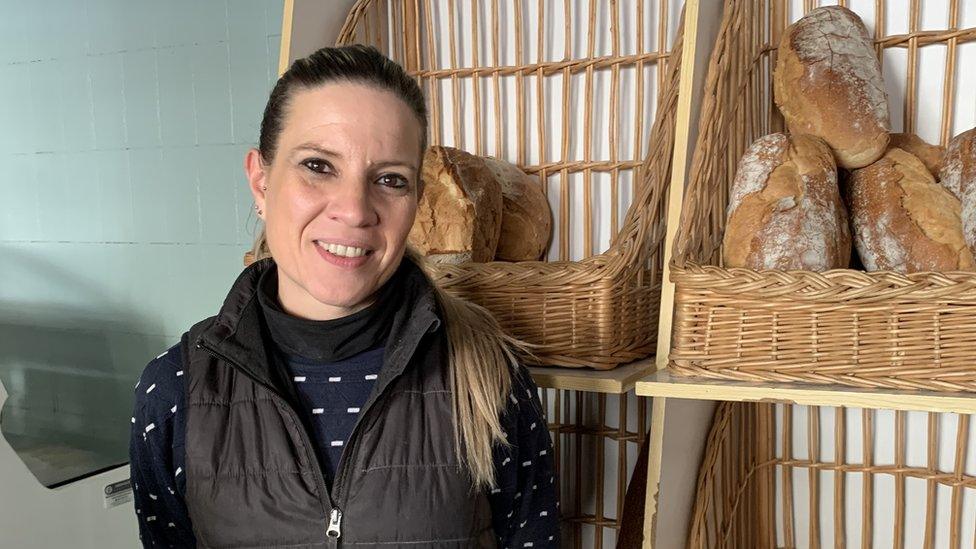
Anna Casòliva Freixe said the lack of water was a worry for her bakery
Spain is familiar with dry conditions and other areas of the country are also suffering droughts, including Andalusia in the south and the eastern region of Valencia.
However, Catalonia, which borders southern France, is less used to such conditions, forcing officials to consider bringing in water by ship to Barcelona should it run dry. This measure was previously adopted in 2008.
Other initial emergency restrictions will include a sharp reduction in the use of water for crop farming and industry, and the capping of water supplies per inhabitant per day.
Town halls can face fines for flouting these limits and there is scope for the restrictions to be increased further.
Just a few kilometres away from Berga, the impact of the drought is all too visible. The la Baells reservoir, along with others in the Ter-Llobregat basin system, provides water for Barcelona and dozens of surrounding towns.
Its currently filled far below capacity, with its parched banks exposed.
"Barcelona and its surrounding area are home to five or six million people and that population density makes it a very vulnerable area," Anna Barnadas, secretary for climate action in the Catalan government, told the BBC.
She said that a Catalan government drought strategy, drawn up in 2021, had already diversified the region's water supply, making it less reliant on reservoirs and wells. Some restrictions on water use have already been in place.
Such measures, Ms Barnadas said, allowed the authorities to delay the emergency measures.
It has been a priority for us to delay the state of emergency but it is impossible to avoid it.
"We realise that the state of emergency affects all sectors, it affects the whole population and so it means, in this case, introducing some major restrictions," she said.
"It has been a priority for us to delay the state of emergency but it is impossible to avoid it."
Ms Barnadas said it was too soon to be able to know whether the drought could be attributed to climate change, although the Catalan government believes that to be the case.
Climate change does not cause all droughts, but increased heat in the atmosphere exacerbates dry spells. Temperatures in the Mediterranean region are increasing 20% faster than the global average, according to the UN and rises are expected to continue unless there are drastic cuts to emissions.
In Barcelona itself, the drought's impact is less visible than in the nearby mountains. But decorative fountains in the city have been switched off for the last year, and the watering of public and private gardens is mostly prohibited.
"I try to save water in my daily life, having quick showers and this kind of thing," one local resident, Silvia Martínez, told the BBC.
"But I'm afraid this this is going to be something that is normal in the future."
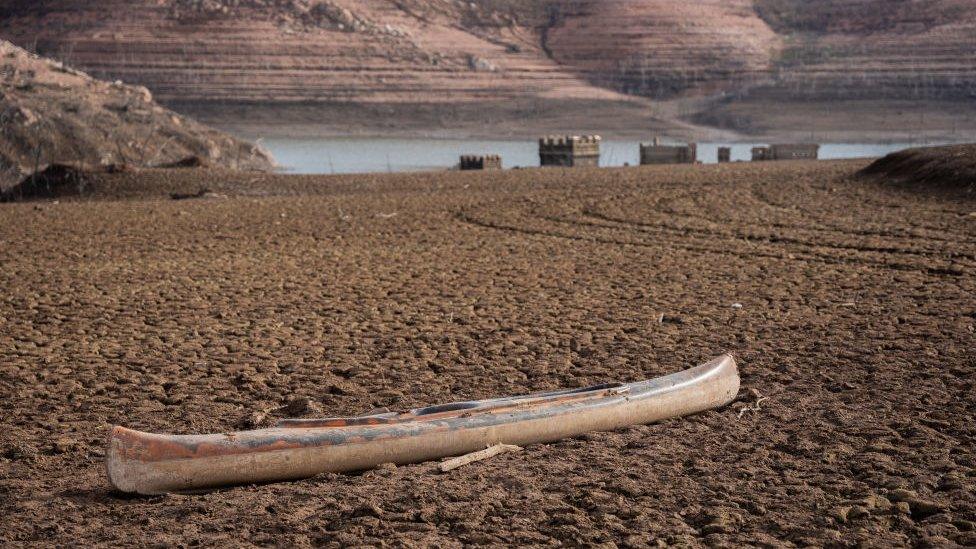
Capacity at the Sau reservoir fell to a record low in January
Barcelona's status as Spain's top tourist destination raises the question as to how it would handle the high season if the drought were to continue into the summer. More than 12 million people visited the city in 2023 and Marta Domènech i Tomàs, director general of tourism for the government of Catalonia, told the BBC that 2024 could see even more visitors.
She said that the region was "really well prepared" to receive tourists despite the drought and that the industry was making adjustments to adapt to the shortage of water.
Hotels have been taking measures which range from informing guests about the need for careful water use, to installing water counters in bathrooms and encouraging guests to reuse sheets and towels.
However, the mood among many Catalans is that things will get worse before they get better.
"It's one of those things where they've been warning us for some time but we don't take much notice, and so we carry on with our normal lives," said local man Pep Soler, as he headed to work in central Barcelona.
He added: "We're too used to certain privileges which aren't altogether necessary and we need to reduce how much water we use."
- Published17 June 2023
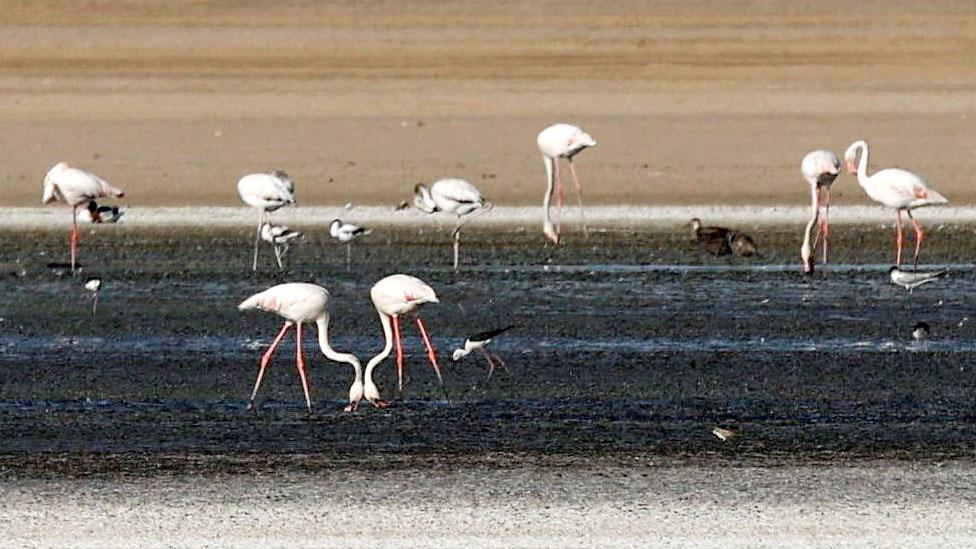
- Published4 April 2023
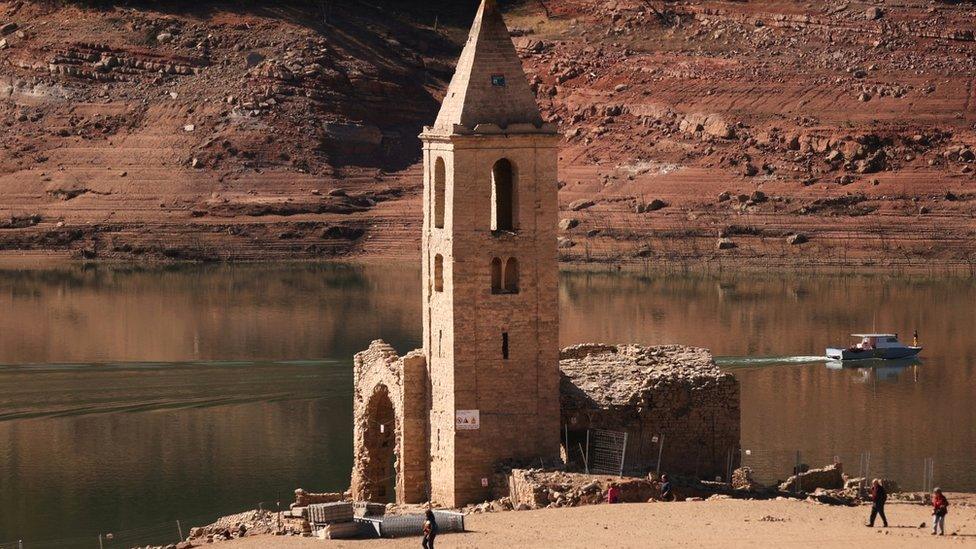
- Published14 December 2023
